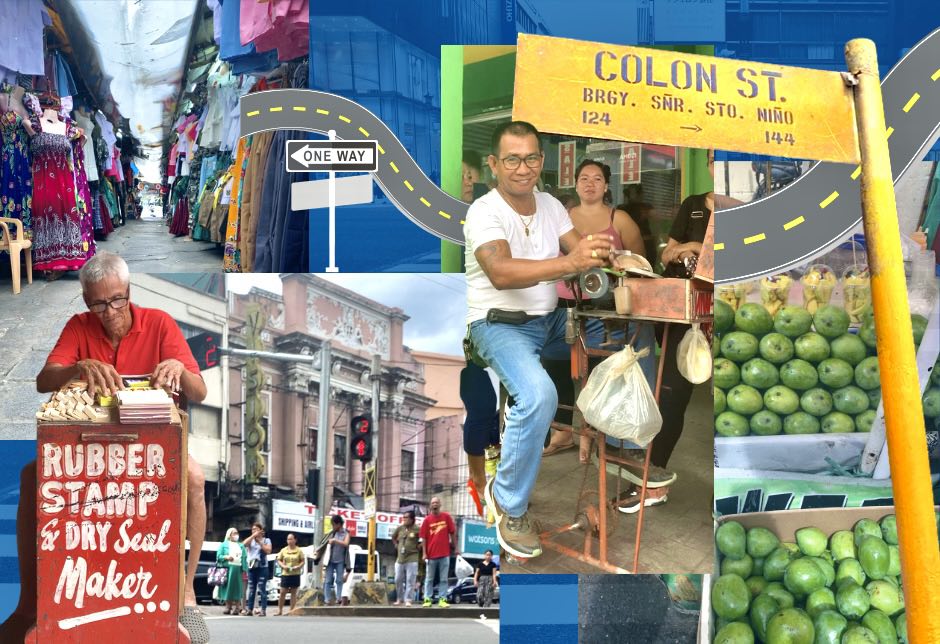CEBU CITY, Philippines— Colon Street is the oldest street in the Philippines and among the busiest one in Cebu City.
This street holds some portals to the past that would remind people of today why and how this street flourished over the years.
The street was built in the year 1565 and was named after Cristobal Colon, or more commonly known as Christopher Columbus.
Presently, there are many stores and buildings along the stretch of Colon Street. New buildings are up with the old ones that hold so much memories.
There are a lot of things you’ll find that may interest you when walking on this street.
First is the Colon Obelisk, which shares the rich history of the street.
Standing in the middle of the road at the north end of Colon, the pillar made of granite symbolizes the history of the street.
Another thing that you may find interesting are the presence of old small businesses such as rubber stamp makers.
Remember the days people would wait up in line to get stamps done? They may not be getting that much customers now but they’re still there!
One of these rubber stamp makers is Rene, from Pasil, Cebu. He has been making rubber stamps for 30 plus years along Colon Street.
His stamp prizes vary in sizes and range from P50 to P500.
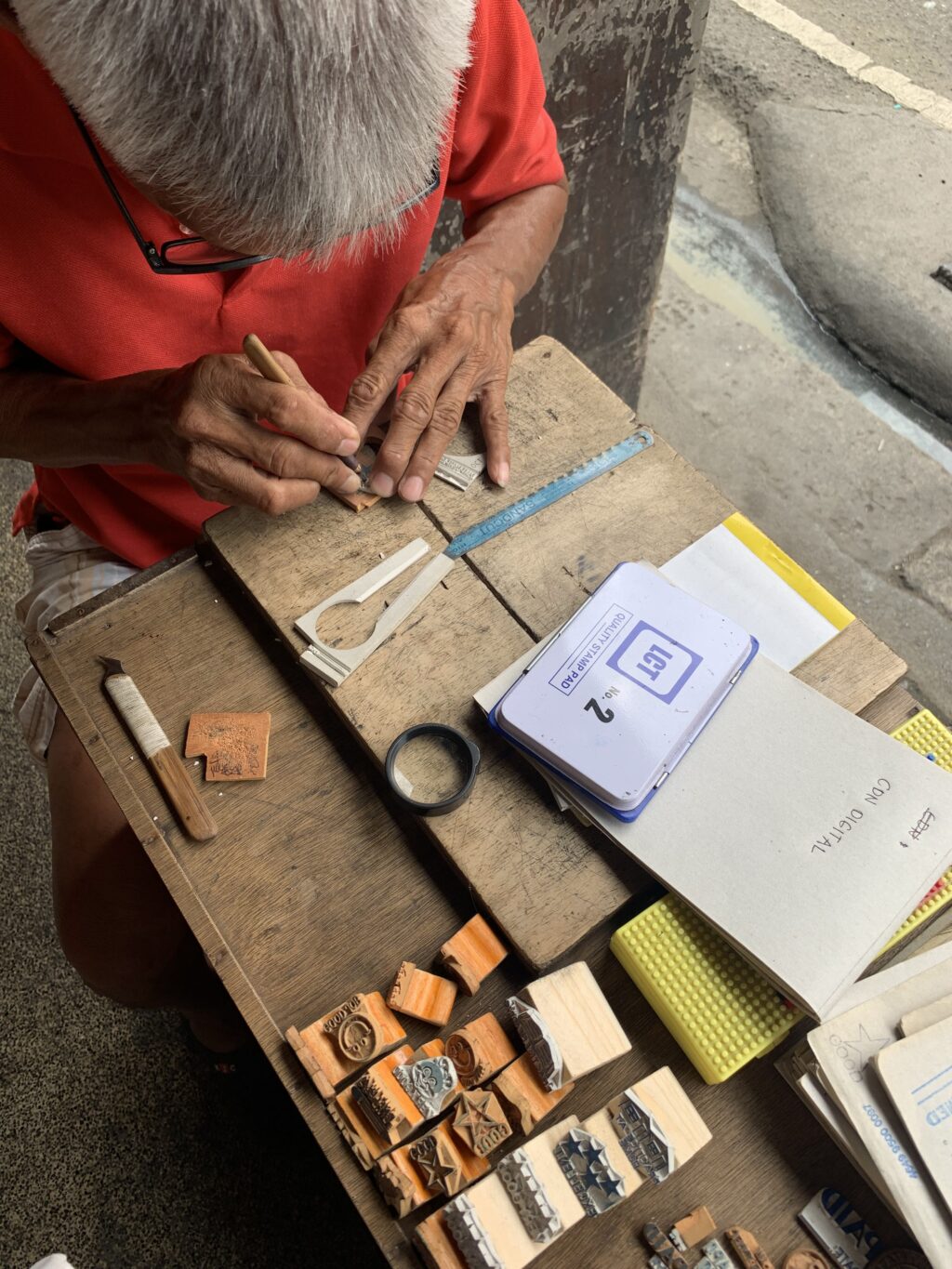
Rene, a stamp maker in Colon Street in Cebu City. CDN Digital photo | Immae Lachica
Rene says he used to take home a couple of thousands in a day, but these days, he is lucky to get at least P500 on a daily basis. On slow days, he only gets P300.
To make a small stamp, it will usually take 10-15 minutes.
Also catching our attention is a blade sharpener named Win-Win.
He is one of the few remaining “tig ba-id” along Colon Street.
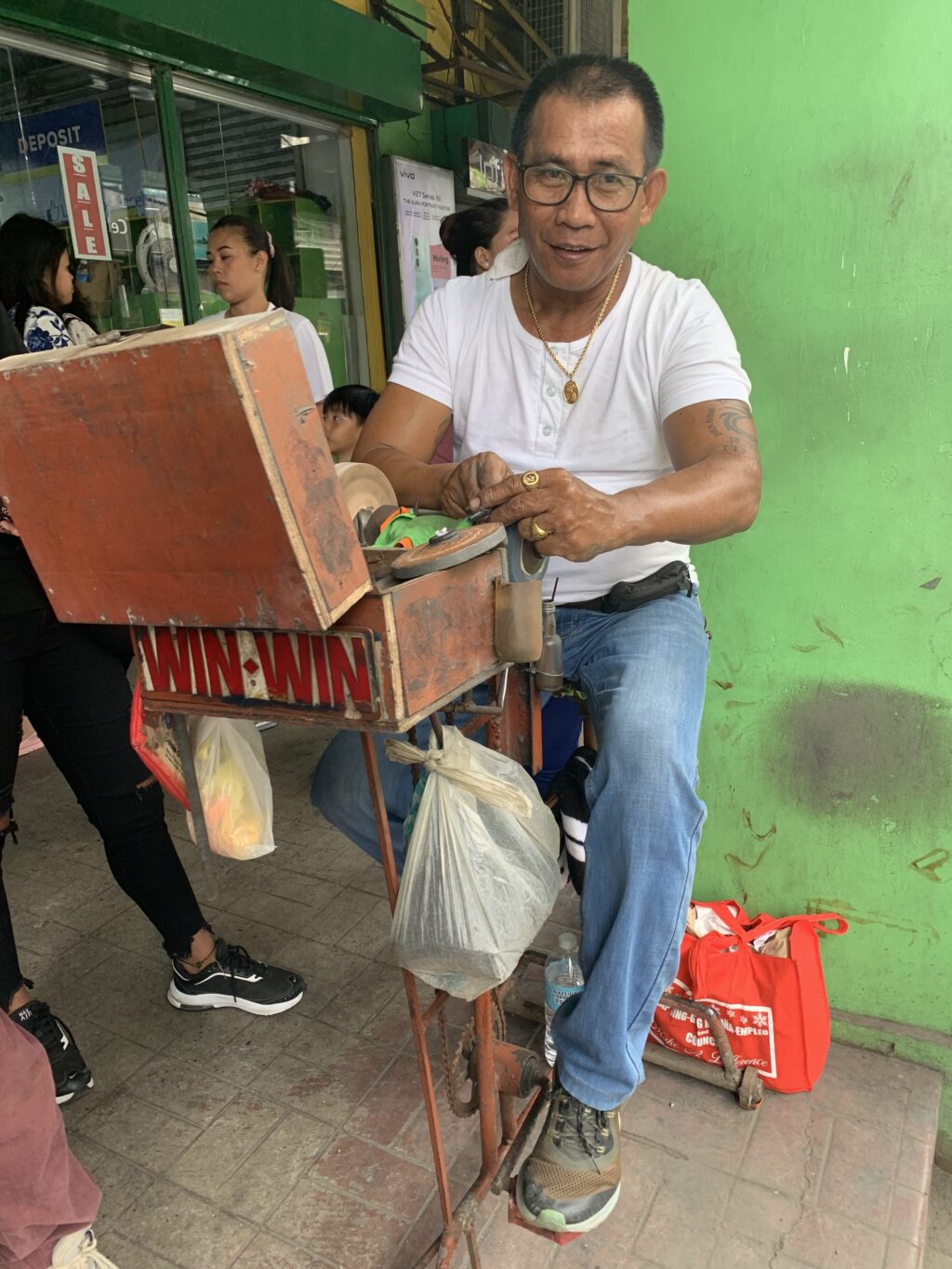
A blade sharpener, locally called “tig-ba-id,” along Colon Street. CDN Digital photo | Immae Lachica
Win-Win has been sharpening nail cutters, scissors, nail nippers, and the like for more than 30 years.
Win-Win still uses an old machine that looks like a bike to sharpen blades.
WATCH:
His price range is between P40 to P160.
Also hidden in some side streets along Colon are several stores selling ready to wear clothes, uniforms, and costumes. It is usually called “Tabo sa Banay.”
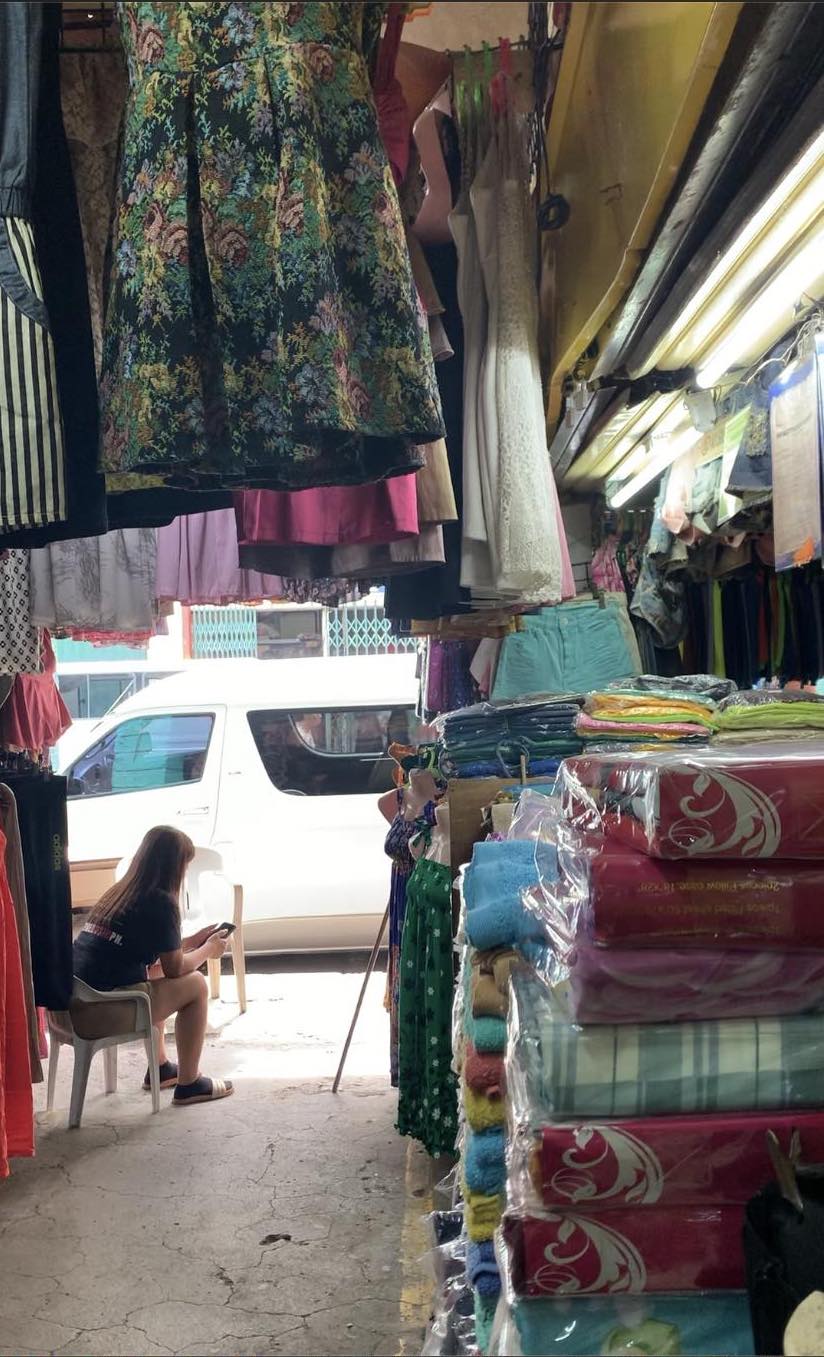
Tabo sa Banay in Colon, Cebu. CDN Digital photo | Jean Commendador
“Tabo” in Cebuano means gathering, and “banay” means race. In this part of Cebu City, “tabo sa banay” means a gathering of community where buying and selling of goods, especially clothes, takes place.
One of the many vendors in this area is Joy.
She has been selling ready-to-wear clothes and shirts for 27 years.
She recalls how good business was before and that the entire place where she is renting was filled with other stores. Business slowed down over the years, she says.
The advent of the internet and the life after pandemic took a toll on how they were doing in the “tabo” as customers prefer to buy online now.
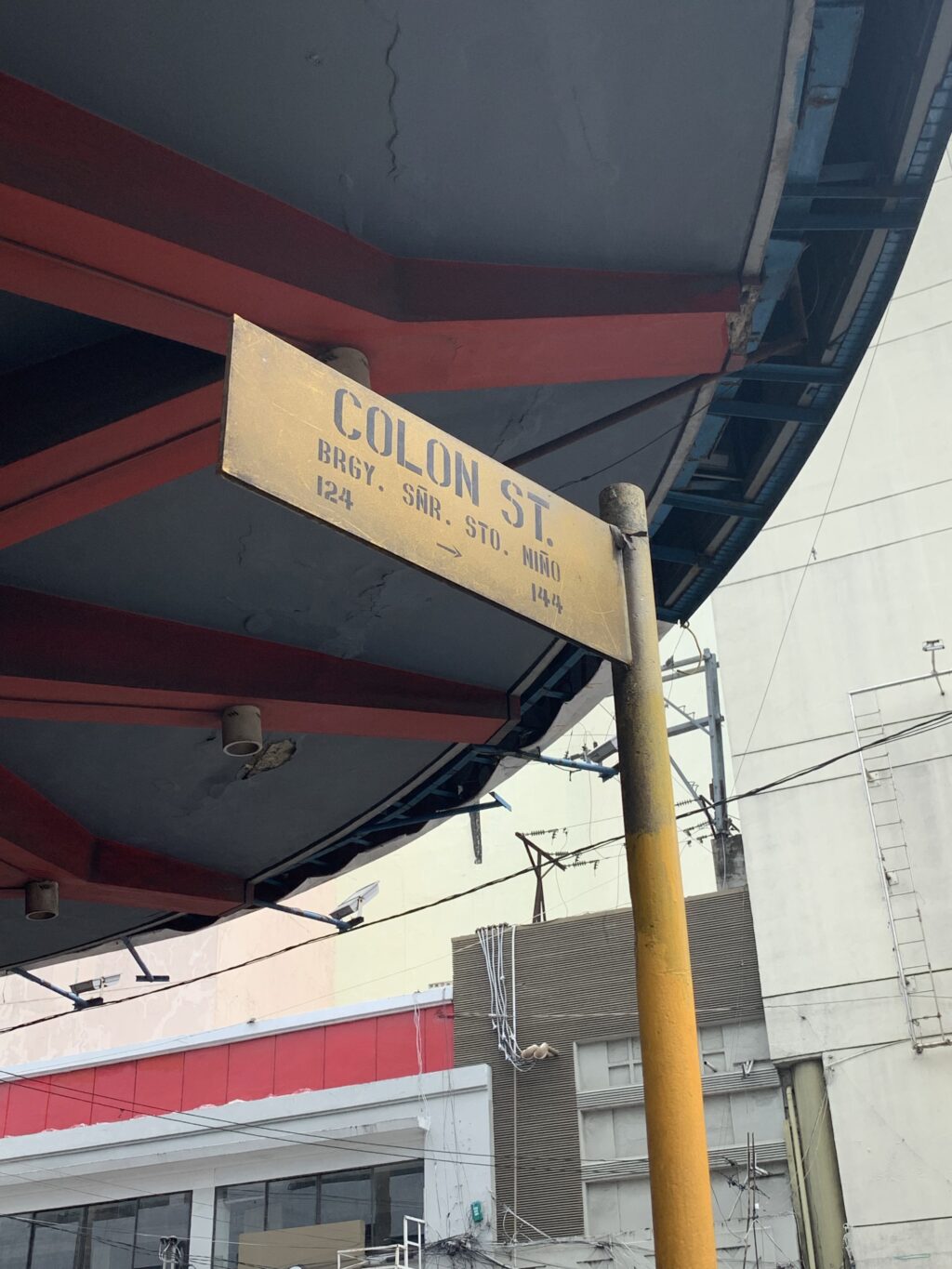
Colon Street. | Immae Lachica
Colon Street may have lost some of its grandeur over time, but it has always been a blessing to the people who make a living along the street.
A walk along the oldest street in the country would be good every now and then as it would help these little businesses stay alive for the years to come.
/bmjo
READ MORE:
Will the crowd-drawing Colon night market make a comeback this year?

